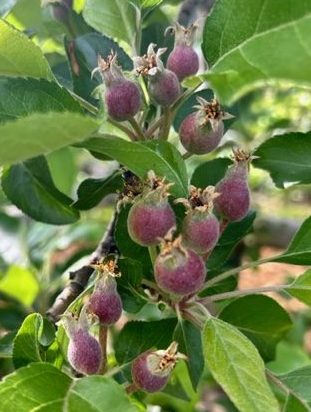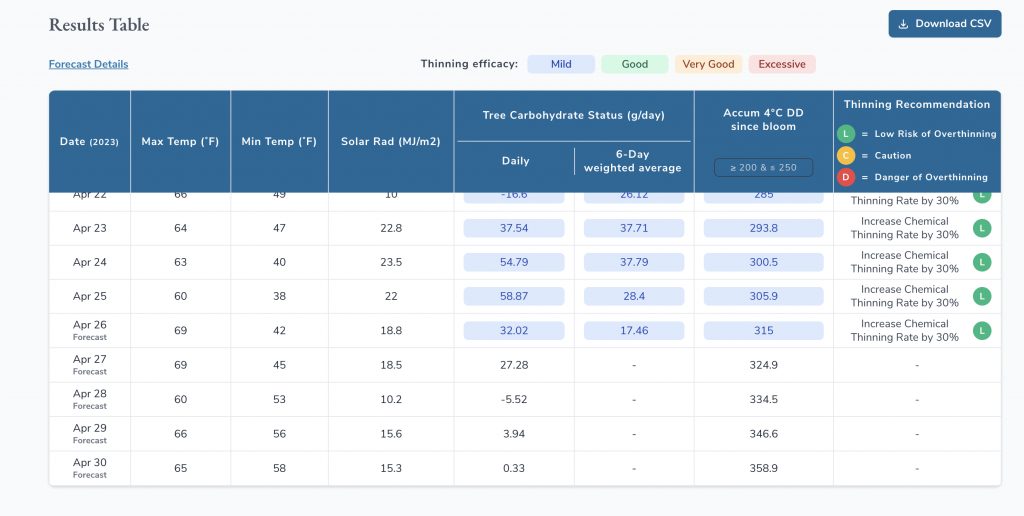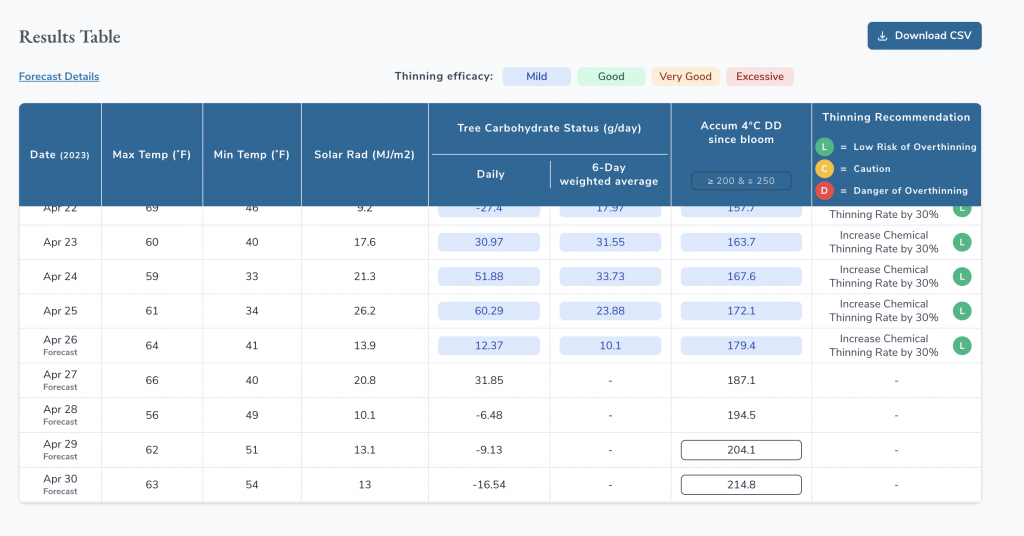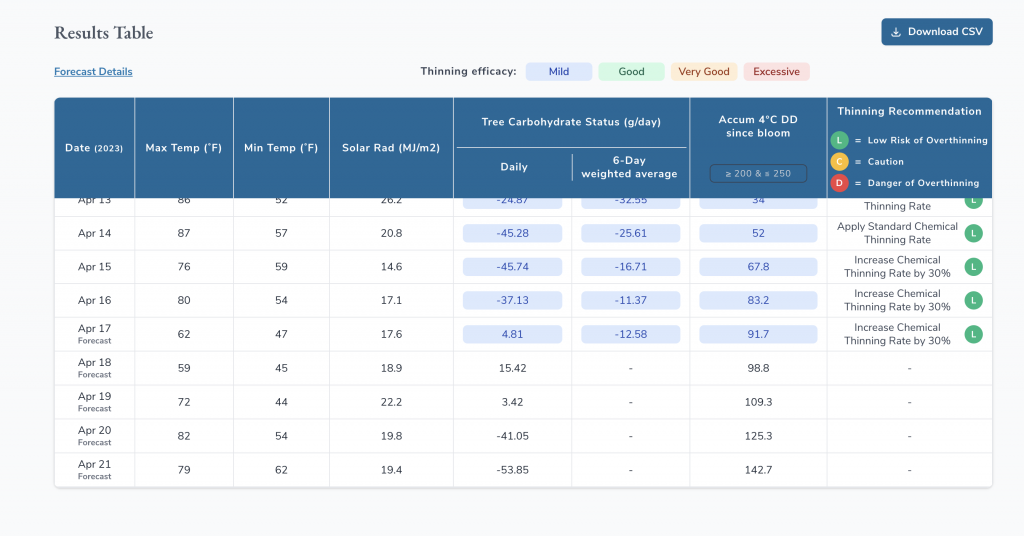
If you haven’t applied any thinning treatments yet and are planning to start this week, I’ve run the carbohydrate thinning model for both Winchester and Central Virginia to guide your decisions.
For Winchester/Frederick County:
Last week offered ideal thinning conditions—fruit size ranged from 6–15 mm, the carbohydrate model indicated a deficit (favorable for thinning), and the temperatures were warm enough for effective 6-BA and NAA activity. If you applied thinning sprays last week, you’re in great shape—no further action is needed this week or until at least next Monday. Keep in mind that it usually takes 10–14 days under current weather conditions to evaluate thinning response. If you didn’t thin last week and want to start now, here are your options:
- A) Fruit size <15 mm:
Use 6-BA and NAA as per the table I shared earlier (https://treefruithorticulturevaes.wp.prod.es.cloud.vt.edu/2024/04/18/apple-fruit-thinning-general-notes-and-specific-recommendations-for-central-virginia/), but increase the rate by 30% to match the model’s recommendations. - B) Fruit size between 15–20 mm:
Consider using Accede—see the link for application rates and guidance (https://treefruithorticulturevaes.wp.prod.es.cloud.vt.edu/2022/03/20/accede-a-new-chemical-thinning-material-for-apples-and-peaches%ef%bf%bc/) - C) Fruit size >18 mm:
You may need to switch to ethephon applications; refer to the following link (https://treefruithorticulturevaes.wp.prod.es.cloud.vt.edu/2020/05/20/apple-rescue-thinning-by-ethephon/)
Before applying anything, I recommend closely inspecting your trees and gently shaking some branches to check for natural fruit drop. If you still believe thinning is needed, don’t delay—waiting until next week may be too late.

For Central Virginia:
The same guidance applies. If you applied thinning sprays last week, no action is needed this week. If not, refer to the thinning recommendation table below for this week’s guidance.

Cornell Apple Carbohydrate Thinning Model for Roseland, VA. Green tip date is March 14, and full-bloom date is April 10.






















